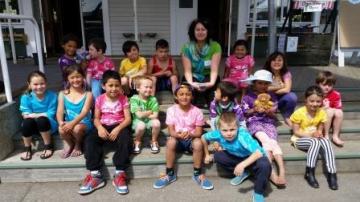Home-Happy 100th Birthday Edgecumbe Primary School
- Our team
- Learning outcomes and reflections
- Our research process
- The First Edgecumbe Primary School
- Our Edgecumbe Primary School today
- Room 7's learning journey
- The Jubilee Committee and the Big Birthday preparations
- How our school prepared for the Big Day!
- Room 1 - The Historical Room
- Friday - The day before 'Happy Birthday'
- Friday - The night before 'Happy Birthday'!
- Saturday - Happy Birthday Edgecumbe Primary School!
- EPS finally plants our trees!
- References and acknowledgements
Our team
The people in our 'Research Team' are:
- Whaea Lesa and Whaea Niki (classroom teachers)
- Room 7 children (the names of our children are in the 'References and Acknowledgements' section)
...and the resources we used were:
- Ourselves
- Our Parents, Grandparents, our Aunties and Uncles...our families and our Community
- Old school records, documents, files and photographs
- Other teachers and staff at our school
- The Jubilee / Centennial Committee official facebook page
- YouTube clips of songs and information
- The visitors who returned to visit Edgecumbe Primary School
Some of our children had different jobs to do:
- Supporting each other during art times (eg helping to tie rubber bands onto our t-shirts)
- Discussion 'Buddies' or 'discussion Buzz groups'
- Children walking around our classroom / the school, photographing classrooms and activities, photographing other classes and their learning
Our inquiry plan involved thinking, researching and gathering information about what it is like to live in Edgecumbe today in 2014, in Edgecumbe in 1954 and 1914. We then compared different focuses from each of these times such as:
- The clothing we wear to school
- Education - What kinds of things do we learn about, how, and what equipment can help us learn? What do you learn about? How do we learn at our school? What types of technology help us learn?
- ICT technology that needs a battery or power source / types of common technology that does not need a power source (eg a can opener) that can help us around home
- Different types of transport
- Games and toys
- Families - Who makes up our family? (e.g. How big are our families today compared to families in 1914)
We used different ways to present our information and ideas:
- Graphic organizers such as Mindmaps, Rubrics comparing things from different time periods, Y Chart, brainstorm charts, T charts
- Our thinking through speech (i.e. speech bubbles)
- Video clips we made to show our visitors
- Singing and dancing
- Art work






